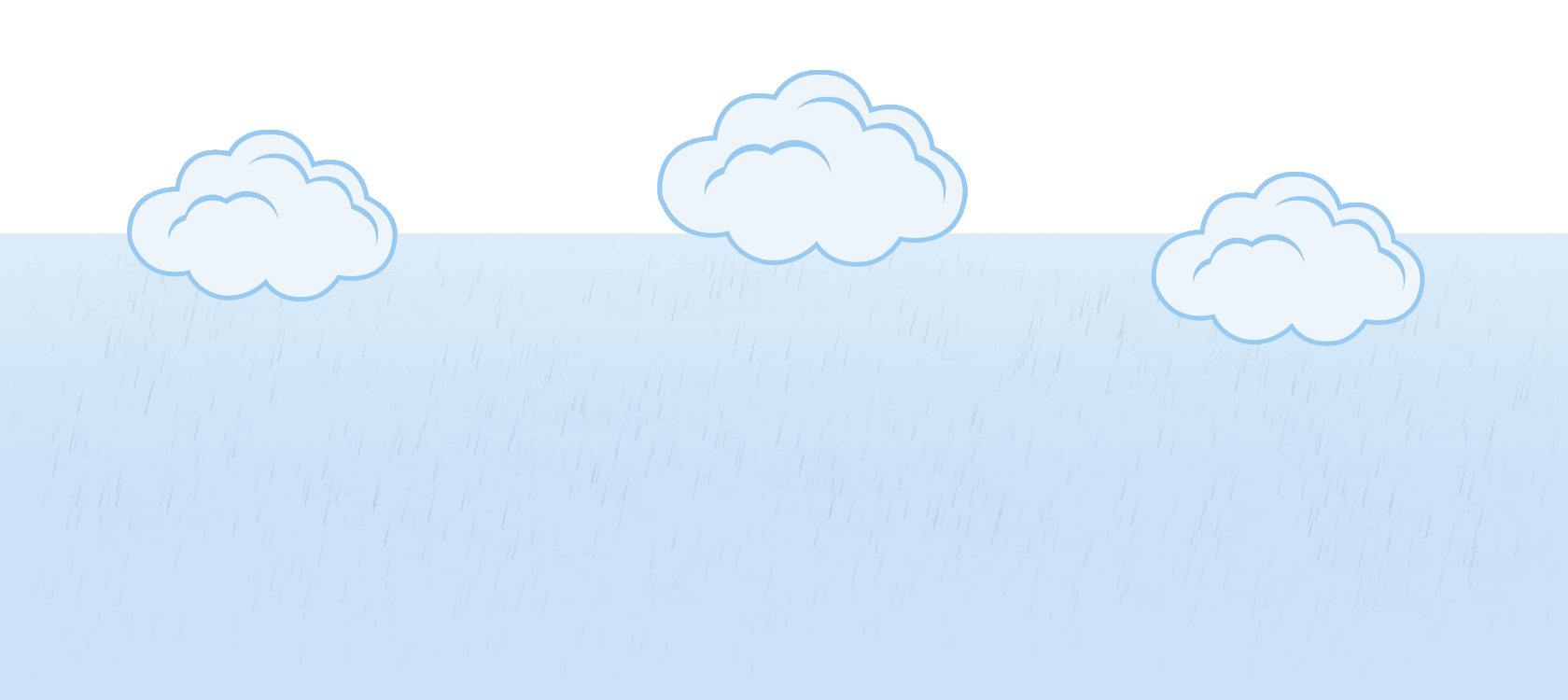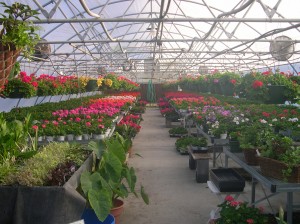In this informational text, elementary students learn how about the greenhouse effect. The text can be used in conjunction with lessons and activities featured in the article Science Lessons About Our Environmental Impact and in the unit plan described in the article Unit Plan: We Change Earth’s Climate. We’ve also included two activities that you can use to help your students make connections to the text – our featured literacy strategy.
Versions of this text are available at the K-2 and 3-5 grade bands. The Flesch-Kincaid reading level of each version is provided following the text. Each version is available as a text only document (a downloadable PDF document), a full-color, illustrated book (downloadable PDF document), and an electronic book with recorded narration. You can use these various versions and formats as you differentiate instruction for your students.
GRADES K-2
Life in the Greenhouse
by Jessica Fries-Gaither
Have you ever been in a greenhouse? People grow plants in a greenhouse. They can even grow them in cold weather.
The roof and walls of a greenhouse are made of glass or plastic. Sunlight can shine through.
Inside the greenhouse, plants, soil, and air absorb the light. They heat up. The heat is trapped inside the greenhouse. It makes the greenhouse very warm inside, even in the winter!
Did you know that Earth is like a greenhouse? The Sun’s light shines on Earth. Earth’s land, air, and water absorb the light. They heat up. Earth’s air traps the heat. It keeps Earth warm.
You can see this for yourself! Try this experiment! You need two glass jars, two cups of water, a clear plastic bag, two thermometers, and tape. You might also need a lamp.
First, fill each jar with one cup of water.
Next, place a thermometer in each jar. Put the plastic bag over one jar. Seal the bag with the tape. Take the temperature of the water in each jar.
Put both jars in the sun or under a lamp. Leave them there for an hour. How do you think the temperature will change in each jar?
After an hour, record the temperature of the water in each jar. Which one got hotter? Why?
The water in the jar with the plastic bag got hotter. The heat was trapped inside the bag. This is like Earth’s air keeping Earth warm.
The other jar wasn’t covered up. The heat could escape. The water in the jar didn’t get as hot.
Earth’s air is important. It keeps our planet just right for us!
Glossary
greenhouse: a building in which people grow plants all year long
Flesch-Kincaid Reading Level = 1.8
Access this Grades K-2 text as a text-only document.
Access this Grades K-2 text as a full-color illustrated book.
Access this Grades K-2 text as an electronic book.
Notes for assembling the illustrated books:
You can put this book together a couple of different ways. You can print out the pages, cut them in half and then order the pages back to front. Fold the stack in half and then staple the spine of the book. Pairs of pages can then be stapled or glued along the right edge.
You can also assemble the book as a foldable book.
To assemble the books this way, print the four pages and align the document pages so that the following book page numbers are in the lower right-hand corner: front page, page 6, page 2, and page 4. (The cover page should be on top and page 4 on the bottom.) Set your copier to copy single pages into double pages and run the four document pages in the order specified. Cut along the dotted line in the center of the double-sided page, place the book pages in order, fold, and staple along the spine.
GRADES 3-5
Life in the Greenhouse
by Jessica Fries-Gaither
Have you ever been in a greenhouse? It’s a building in which people grow plants, even in cold weather. Greenhouse roofs and walls are made of glass or plastic. These transparent materials let a lot of sunlight shine into the building. Inside, plants, soil, air, and other materials absorb the light and heat up. They give off heat. The heat is trapped inside the greenhouse by the roof and walls. The trapped heat makes the greenhouse very warm, even if it’s cold outside!
Did you know that Earth is like a greenhouse? The Sun’s light shines on Earth, just as it does on a greenhouse. The Earth’s land, air and water absorb the light and heat up. They give off heat. The gases in Earth’s atmosphere trap the heat, as the greenhouse’s roof and walls do. So the Earth’s atmosphere keeps the planet warm.
This is called the greenhouse effect. Without it, Earth would be too cold. Plants, animals, and people wouldn’t be able to survive.
Want to see the greenhouse effect for yourself? Try this experiment! You’ll need two identical glass jars, two cups of water, a clear plastic bag, two thermometers, and tape. You’ll also need a lamp if you can’t put the jars in the sun.
First, take the glass jars and fill them each with one cup of water.
Next, place a thermometer into each jar. Put the plastic bag over one of the jars, and use tape to seal it. Take the temperature of the water in each jar.
Put both jars in the sun (or under a lamp) and leave them there for an hour. How do you think the temperature will change in each jar?
After an hour, record the temperature of the water in each jar. Which one got hotter? Why?
The water in the jar covered by the plastic bag gets hotter. This is because the heat is trapped inside the bag. This is like Earth’s atmosphere trapping heat and keeping Earth warm.
Because the other jar wasn’t covered up, the heat could escape. The temperature didn’t get as hot. This is what Earth would be like if it didn’t have an atmosphere.
The greenhouse effect is important for life on Earth. It makes our Earth just right for us!
Glossary
absorb: to take in
greenhouse: a building in which people grow plants all year long
greenhouse effect: warming of the Earth when heat is trapped by Earth’s atmosphere
transparent: able to be seen through
Flesch-Kincaid Reading Level: 3.4
Access this Grades 3-5 text as a text-only document.
Access this Grades 3-5 text as a full-color illustrated book.
Access this Grades 3-5 text as an electronic book.
Notes for assembling the illustrated books:
You can put this book together a couple of different ways. You can print out the pages, cut them in half and then order the pages back to front. Fold the stack in half and then staple the spine of the book. Pairs of pages can then be stapled or glued along the right edge.
You can also assemble the book as a foldable book.
To assemble the books this way, print the four pages and align the document pages so that the following book page numbers are in the lower right-hand corner: front page, page 6, page 2, and page 4. (The cover page should be on top and page 4 on the bottom.) Set your copier to copy single pages into double pages and run the four document pages in the order specified. Cut along the dotted line in the center of the double-sided page, place the book pages in order, fold, and staple along the spine.
Activities
Use these resources to help students make connections to text. More information on the strategy can be found in our article Making Connections. Additional lessons can be found in the article Making Connections with Literacy Lessons.
Connection Web
Students use this printout to expand on connections they have made to a text and use those details to write essays or create projects about the text.
Double Entry Journal
This printout helps students record ideas and situations from texts in one column, and their reactions in the second, thus making a connection between the text and themselves, another text, or the world.
This article was written by Jessica Fries-Gaither. Jessica is an education resource specialist at The Ohio State University and project director of Beyond Weather and the Water Cycle and Beyond Penguins and Polar Bears. She has taught in elementary and middle school settings. Email Jessica at beyondweather@msteacher.org.
Copyright December 2011 – The Ohio State University. This material is based upon work supported by the National Science Foundation under Grant No. 1034922. Any opinions, findings, and conclusions or recommendations expressed in this material are those of the author(s) and do not necessarily reflect the views of the National Science Foundation. This work is licensed under an Attribution-ShareAlike 3.0 Unported Creative Commons license.




